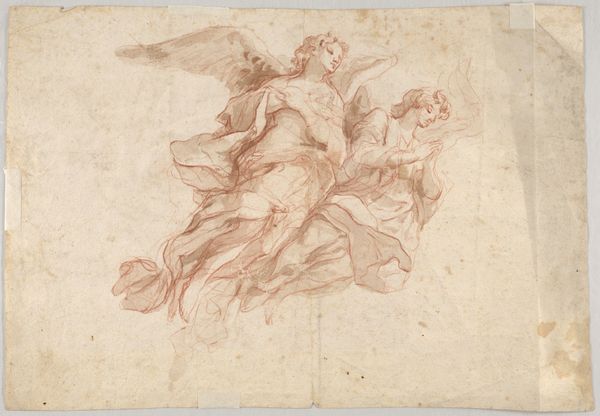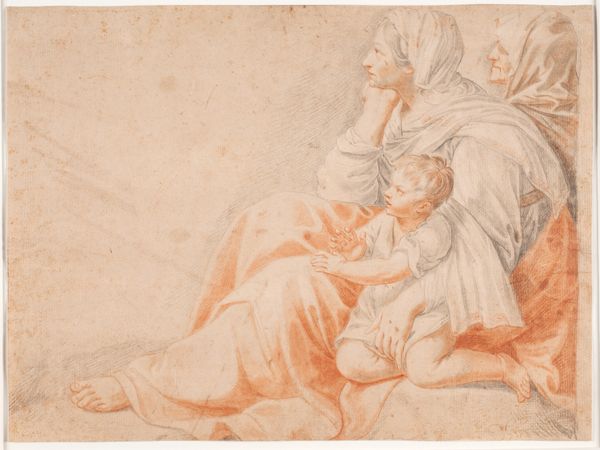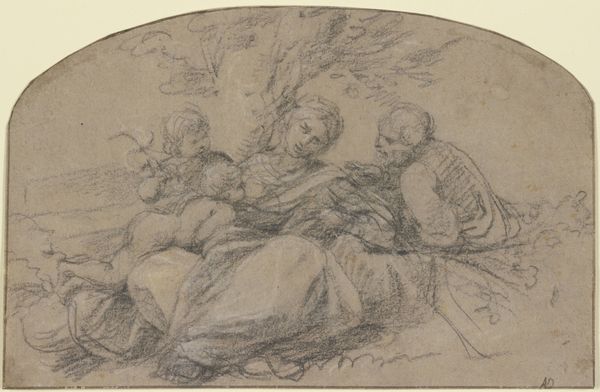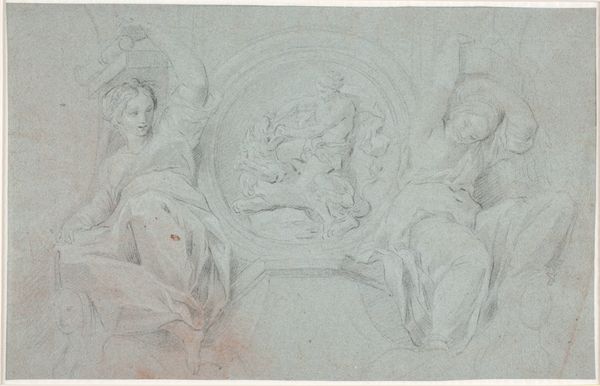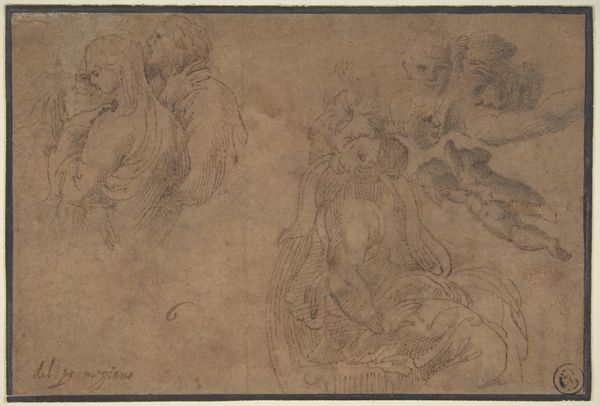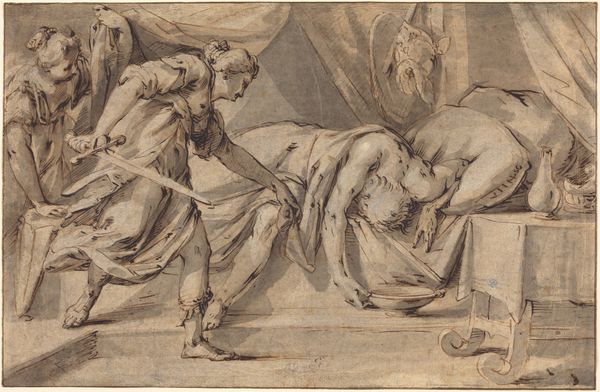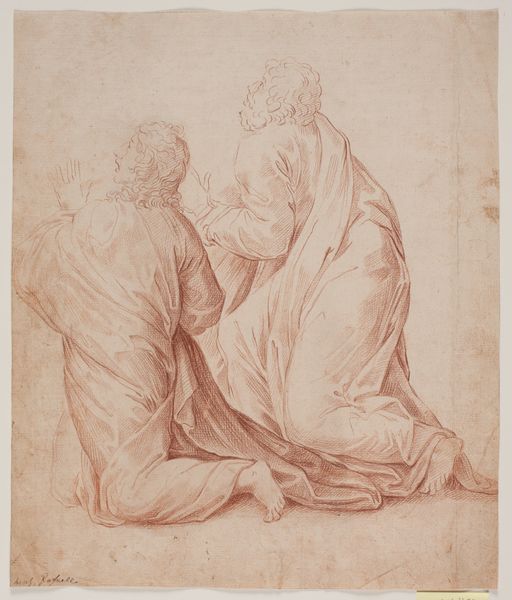
drawing, paper, pencil
#
portrait
#
drawing
#
paper
#
coloured pencil
#
pencil
#
history-painting
#
academic-art
Dimensions: 11 9/16 x 14 7/8 in. (29.3 x 37.8 cm)
Copyright: Public Domain
Editor: This is Michel Dorigny's "Study for the Muse Urania," created sometime between 1630 and 1665, a pencil and colored pencil drawing on paper. I'm struck by the ethereal quality, especially the draped fabric. How do you interpret the composition of this drawing? Curator: Observe the stark contrast between the fully rendered figure and the separate head study, almost as an afterthought. Dorigny masterfully uses line and shadow to create volume, particularly in the drapery. Consider the way the figure's arm leads the eye towards the orb. The orb, rendered so plainly, serves as a counterpoint to the textural complexity surrounding it. It emphasizes volume and three-dimensionality of the work as a whole. How does this tension influence your perception? Editor: I see what you mean about the orb and drapery – it creates a dynamic visual interest. It's like a study in textures and forms within a single work. I also note that only a sphere would work; a cube, for instance, would detract from the textural intrigue of the drapery. Curator: Precisely. Notice also the relationship between the primary figure, with its head missing, and the head floating in the upper left corner. The lack of immediate connection forces the viewer to engage with the work piecemeal, and also calls attention to its incompleteness. Editor: So it becomes more about the process, the act of studying, rather than presenting a finished idea. Thank you, that adds a whole new layer to understanding this piece! Curator: Indeed. Through careful analysis of its compositional elements, the drawing provides insight into the artist's technique and formal explorations. I appreciate the dialogue.
Comments
No comments
Be the first to comment and join the conversation on the ultimate creative platform.

